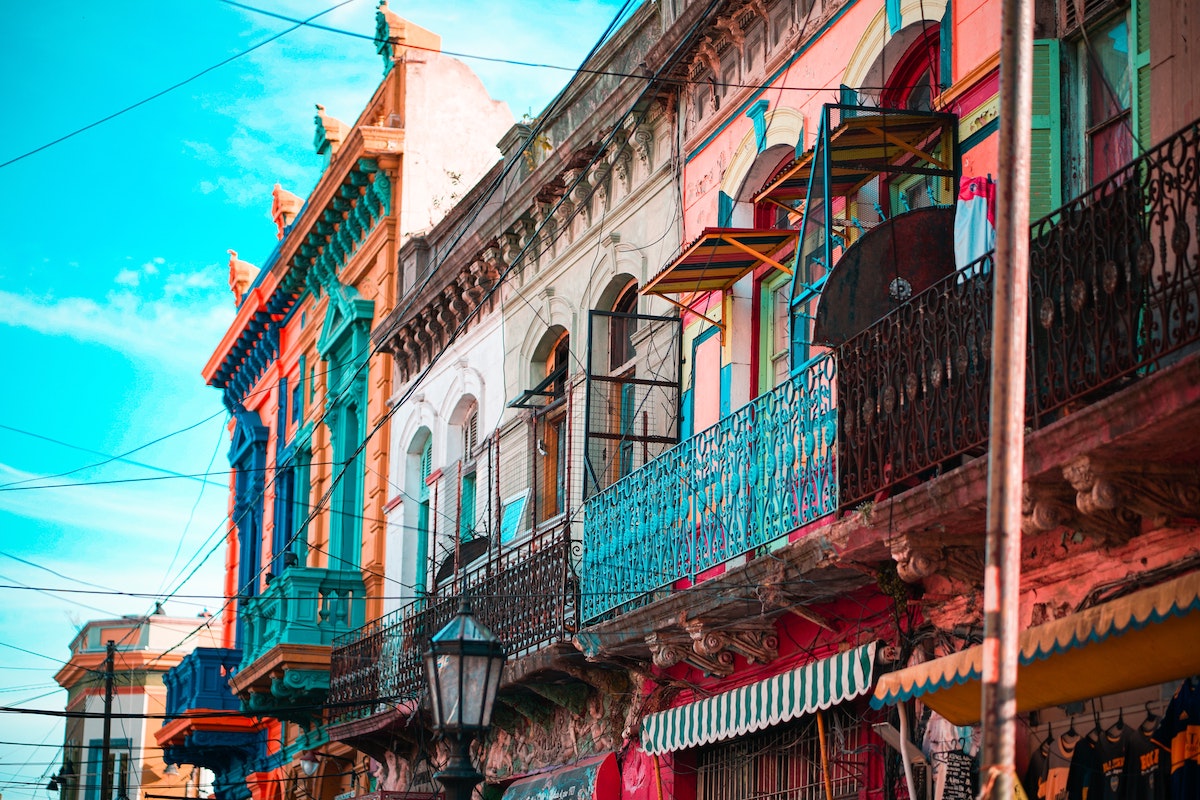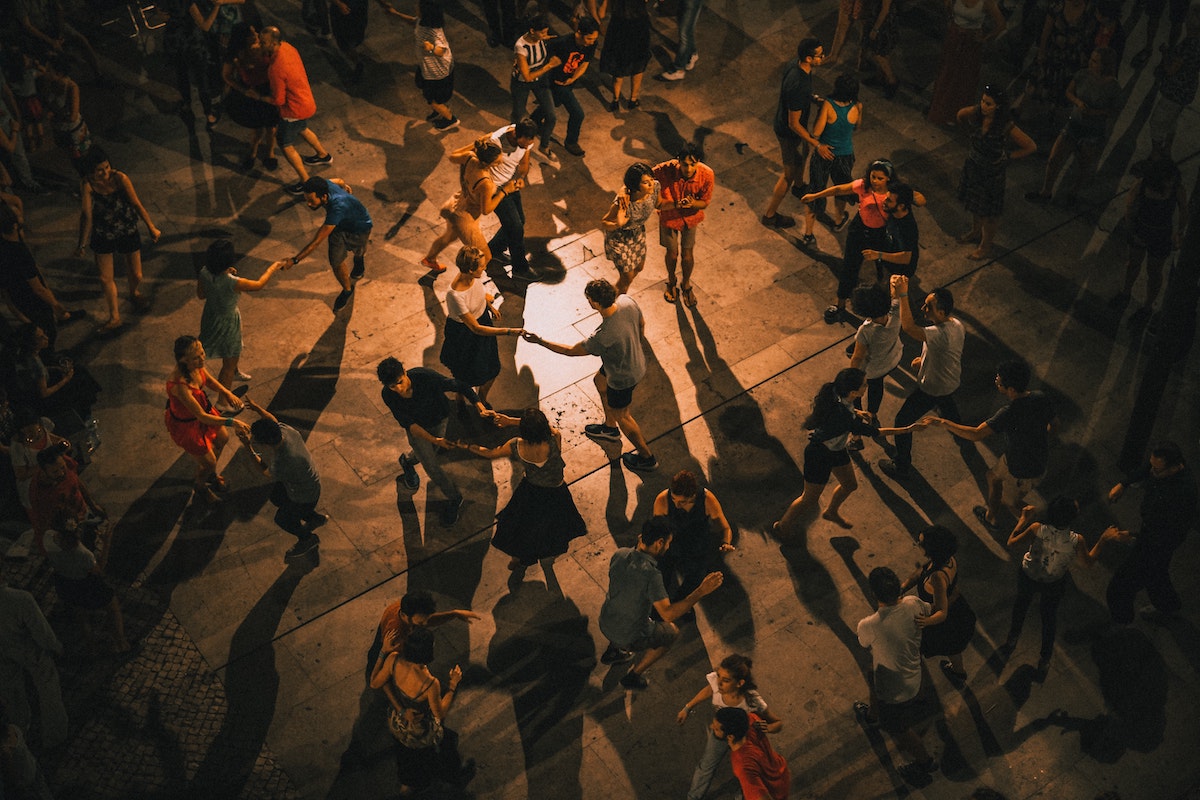Skip to...
For some, the seductive sounds and movements of the tango are synonymous with Buenos Aires. Unfortunately, tango obsession is an expensive habit if you don’t know where to go. Budget travelers should avoid the tourist hype and follow the locals. In other words: when in Buenos Aires, do as the porteños do. Read on for our tips on how you can learn to tango in Argentina!
Before You Go

Photo by Toufic Mobarak on Unsplash
- Check out this list of the top 10 milongas, and start mapping out where you would like to go to learn to tango in Argentina!
- Read The Church of Tango, about a California woman who survives breast cancer and creates a new life as a tango teacher in Buenos Aires.
- Read Cherie’s blog post about What Not to Wear to a Milonga.
- Pack up some sexy dance clothes, in case you can’t find affordable tango clothes in Buenos Aires.
- Learn some Spanish. While many porteños speak English, a knowledge of the language lets you take the cheaper tango lessons that locals take. It also helps you bargain when buying clothes.
A Brief History of Tango in Argentina

Photo by Barbara Zandoval on Unsplash
While the origins of tango are somewhat vague, many believe that the dance was born on Caminito Street in the La Boca barrio.
Flashback to 1880: Approximately six million immigrants enter Buenos Aires. Most arrive from Genoa, Italy. They settle in La Boca. As immigrants continue to enter Argentina, housing becomes scarce. The Italians, being an industrious lot, use left over materials from the shipyards to build a type of tenement housing called conventillo.
Despite their distinction as tenement houses, these dwellings were not depressing. The builders used leftover shipyard paint to create multicolored homes, which encouraged an atmosphere of festivity and creativity. The houses opened up to a central outdoor common area, which prompted interactions between the music and dance styles of the motley of immigrant cultures inhabiting the area. Some say that the merging of these styles gave birth to the tango.
Ladies were conspicuous in their absence in these testosterone filled tenements. The men, realizing that no woman in her right mind could turn down a good dancer, honed their tango skills and developed a mating dance of sorts, designed to draw the attention of the ladies. Meanwhile, the ladies of the night benefited from this female shortage, but business meant long waits for service.
Just as jazz and ragtime evolved from the waiting rooms of the “houses in New Orleans,” tango music satisfied impatient patrons of the brothels of Buenos Aires. In anticipation of needs that would soon (hopefully) be fulfilled, the men danced with each other. Needless to say, this association did nothing for the respectability of tango dancing.
Then, during the early 20th century, Argentine sailors brought the tango to Paris. The Parisians loved it, and when the people of Paris like something, the rest of the world follows the trend. Suddenly, upper class Argentinians, who once shunned the dance, were professing a deep love of tango. Some changes, however, were definitely in order. Gone were the bawdy lyrics of the tangos of the past. Lyrical love songs replaced them. These changes encouraged a new, upscale breed of tango singers and orchestras.
How do you embrace the FIRE (Financial Independence and Early Retirement) lifestyle while addressing financial risks? One solution: semi-retire and travel the world. Let's look at how to get there in this comprehensive guide!
Read the Guide
21st Century Tango

Photo by Ardian Lumi on Unsplash
Today, a certain element of the tango show caters to wealthy tourists. These spectacles take place in large theaters. Price of admission usually includes a dinner, and in some cases, transportation to and from your hotel. Large orchestras back up the dancers, in what resembles a Vegas-style spectacle.
In contrast, you can see authentic, classic tango on the streets and milongas of La Boca and San Telmo. Many of the milongas even offer dance lessons before the show begins. For other types of lessons, stick with group sessions. Private lessons are far more expensive, because the instructor has to rent the space.
Shopping for Tango Clothes

Photo by Daniel Tong on Unsplash
For the most part, the idea of inexpensive tango clothes is an oxymoron, unless you are willing to think outside the box. For example, $100 is considered cheap for a pair of tango shoes. Bargain hunters search the second hand stores known as Feria Americana. You can find them at booths at Parque Centenario or in the small shops that line the streets of the Palermo district. Juan Perez, located at 1441 Marcelo T. de Alvear , is a local favorite for the cheap, the vintage and the elegant.
Vendors at street fairs, such as the Feria de San Telmo, might occasionally sell tango clothes and accessories. Even if you don’t find anything to your liking, visit on a Sunday, and head toward Plaza Dorrego. At about 8 pm, an open-air tango show begins.
This is the soul of tango. One need not be wealthy to enjoy it.
About the Author
Lisa Marie Mercer has always loved to wander. In 2011, after exploring most parts of the globe, she and her husband wandered off to Uruguay, and decided to give it a new name – home. She wrote this article on behalf of Tucan Travel who organise adventure tours to Argentina and beyond.
Featured image via Unsplash.

